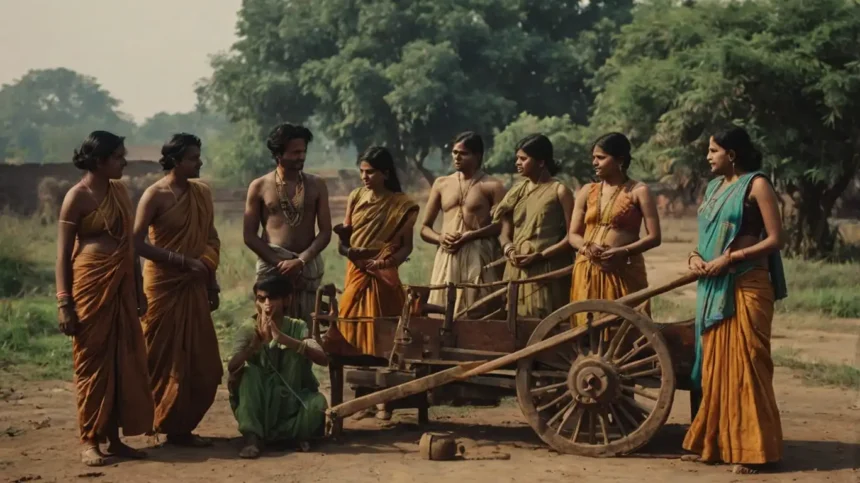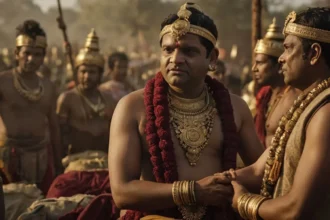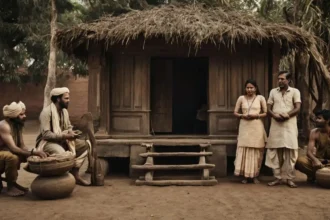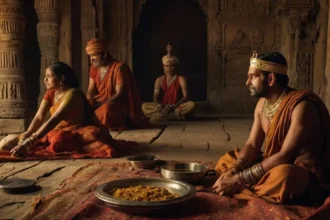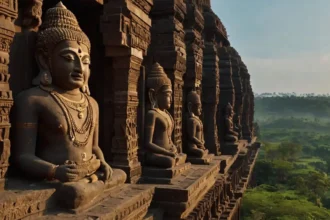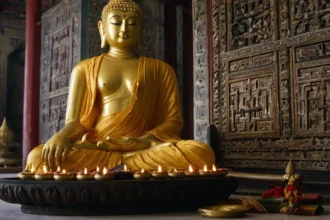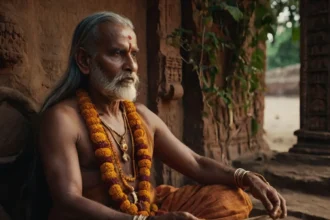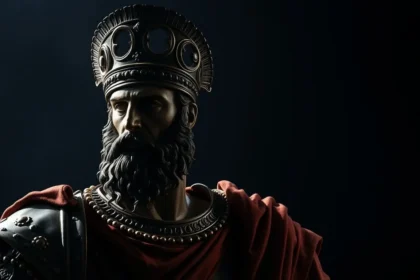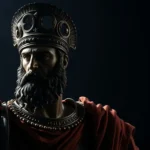The Post-Gupta Period (600–750 CE) is a fascinating phase in Indian history that bridges the transition from the centralized empire of the Guptas to the fragmented but culturally rich regional kingdoms of early medieval India. While political instability defined the era, it also saw remarkable developments in literature, architecture, art, and religion, laying the foundation for future dynasties. This article explores the key aspects of the Post-Gupta Period, offering insights for students, history enthusiasts, and scholars.
The Post-Gupta period was a bridge between ancient glory and medieval resurgence, where regional kingdoms laid the groundwork for India’s future greatness
R.C. Majumdar
Political Landscape: Rise of Regional Kingdoms
After the decline of the Gupta Empire, power became decentralized, with various regional kingdoms asserting their dominance. Among these, the Pushyabhuti dynasty, also known as the Vardhan dynasty, became prominent in northern India, while the Chalukyas and Pallavas dominated the Deccan and southern regions.
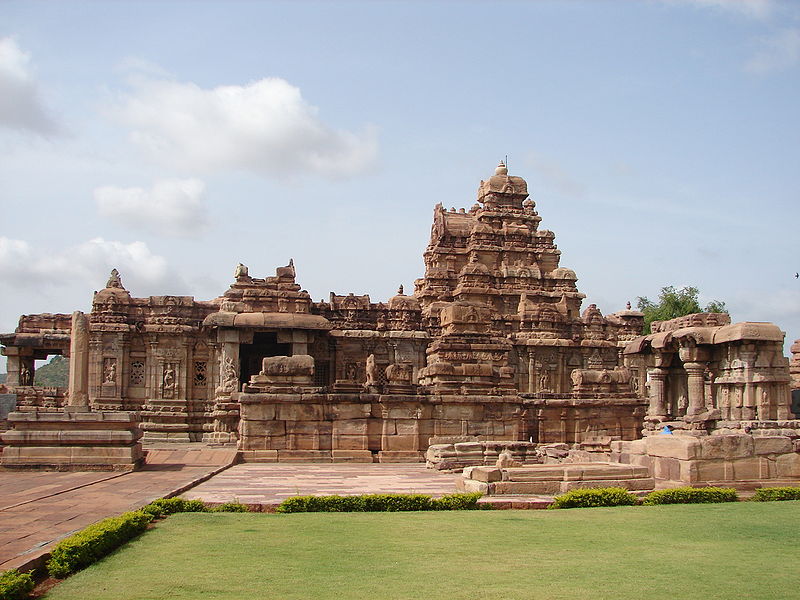
The Vardhan Dynasty:
The Pushyabhutis emerged in Thaneshwar (Haryana), establishing a stronghold under Prabhakar Vardhan. However, it was Harsha Vardhan, his younger son, who truly elevated the dynasty to greatness.
- Rajyavardhan’s Tragedy: After Prabhakar Vardhan’s death, his elder son Rajyavardhan attempted to avenge the murder of his brother-in-law Grahavarman but was killed by Shashanka, the ruler of Gauda.
- Harsha’s Rise: At just 16, Harsha assumed the throne. A skilled diplomat and warrior, he reunited much of northern India and declared Kannauj as his capital.
Example:
Harsha’s reign is notable for his conflicts with Pulakeshin II, the Chalukyan king. Harsha’s attempt to expand into the Deccan was halted at the Narmada River, marking a significant boundary between the northern and southern powers.
Literary and Scholarly Achievements
The Post-Gupta Period is celebrated for its contributions to Sanskrit literature and scholarship, continuing the intellectual legacy of the Guptas.
Prominent Works and Authors:
- Harsha’s Writings:
Harsha himself was an accomplished playwright, authoring Ratnavali, Nagananda, and Priyadarshika. These Sanskrit dramas highlight themes of romance, morality, and cultural ethos. - Banabhatta’s Masterpieces:
- Harshacharita: A biography of Harsha, offering detailed insights into his life and reign.
- Kadambari: A romantic novel, considered one of the earliest works in Indian prose fiction.
- Hiuen Tsang’s Records:
The Chinese traveler Hiuen Tsang, who spent eight years in Harsha’s court, chronicled Indian society, religion, and administration in his work Si-Yu-Ki (The Records of the Western World).
Example:
Hiuen Tsang praised the flourishing educational institutions, especially Nalanda University, which Harsha generously patronized. This institution attracted students from across Asia, becoming a beacon of global learning.
Cultural Flourish: Art and Architecture
The Post-Gupta Period saw the continuation and transformation of Gupta artistic traditions. The development of temple architecture and sculpture during this era laid the groundwork for medieval Indian art.
Architecture:
- Lakshmana Temple, Sirpur:
- Dedicated to Vishnu, this temple demonstrates an early evolution in structural temple design.
- Chalukyan Temples:
- The Badami Cave Temples, carved into sandstone cliffs, include exquisite depictions of Hindu deities, Jain tirthankaras, and Buddhist motifs.
- The Durga Temple at Aihole, with its apsidal shape, reflects a blend of Buddhist chaitya and Hindu temple architecture.
- Pallava Architecture:
- The monolithic Rathas of Mamallapuram, built by Narasimhavarman I, showcase the Pallavas’ innovation in carving temples from single rock structures.
- The Shore Temple at Mamallapuram and Kailasanatha Temple at Kanchipuram marked the transition to structural temples.
Art and Sculpture:
- The Descent of the Ganga (Arjuna’s Penance) at Mamallapuram, a massive rock relief, is a masterpiece of Pallava art.
- The Chalukyas contributed intricate carvings, such as the Vishnu image in Badami Cave 3, depicting dynamic forms of divinity.
Example:
The Virupaksha Temple at Pattadakal, commissioned by Queen Lokamahadevi, reflects the culmination of Dravidian architectural innovations.
Religious Transformations
The Post-Gupta Period was a transformative phase for Indian religions, with significant shifts in patronage and practice.
Decline of Buddhism:
While Harsha supported Mahayana Buddhism, the religion began to wane due to competition from resurgent Hindu traditions and internal divisions.
The decline of Buddhism in the Post-Gupta period was marked by the resurgence of Hinduism, signaling a shift in India’s religious landscape.
Romila Thapar
Rise of Hinduism:
- The Bhakti Movement gained momentum, with Shaivism and Vaishnavism emerging as dominant sects.
- Saints like the Nayanars and Alvars composed devotional hymns that resonated with common people, marking a shift toward personal devotion over ritualistic practices.
Example:
Hiuen Tsang noted the growing influence of Brahmanism during his travels, with the construction of Hindu temples overshadowing Buddhist stupas.
Regional Powers of the Deccan and South
The Deccan and southern regions saw the rise of powerful dynasties like the Chalukyas of Badami and the Pallavas of Kanchipuram, each contributing to political and cultural advancements.
Chalukyas of Badami:
- Founded by Pulakeshin I, the dynasty reached its zenith under Pulakeshin II, who successfully defended his kingdom against Harsha.
- The Chalukyan capital at Vatapi became a hub for art and architecture.
Pallavas of Kanchipuram:
- Under Narasimhavarman I (Mamalla), the Pallavas expanded their territory and pioneered innovations in monolithic temple construction.
- The rivalry between the Pallavas and Chalukyas, exemplified by the Battle of Vatapi, defined the political landscape of the southern peninsula.
Example:
The Aihole Inscription, composed by Ravi Kirti, celebrates Pulakeshin II’s victories, including his triumph over Harsha, showcasing the importance of inscriptions as historical records.
Economic and Trade Activities
Trade and commerce remained integral to the prosperity of regional kingdoms during the Post-Gupta Period.
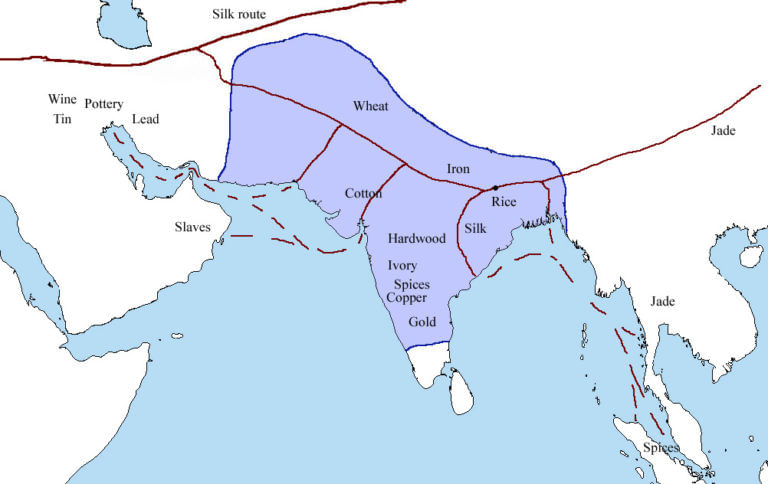
Key Features:
- Ports like Mamallapuram facilitated maritime trade with Southeast Asia, while inland cities thrived as centers of commerce and craftsmanship.
- Agricultural advancements, combined with trade in textiles, spices, and precious metals, sustained the economy.
Example:
The Shore Temple at Mamallapuram, apart from being a religious site, likely served as a landmark for maritime traders, underscoring the connection between religion and commerce.
Contributions to Education
The legacy of the Nalanda University continued into this era, with Harsha providing substantial patronage. Other educational institutions also flourished, fostering advancements in astronomy, mathematics, and philosophy.
Example:
The astronomer Brahmagupta, active during this period, made significant contributions to mathematics and astronomy, including theories on zero and gravity, which influenced later scholars globally.
Breaking Down the Barriers
The Post-Gupta Period was an era of profound transformation, bridging the classical and medieval periods of Indian history. Politically, it witnessed the rise of regional powers like the Vardhan dynasty, Chalukyas, and Pallavas, each leaving indelible marks on the subcontinent. Culturally, the era continued the Gupta legacy while fostering new traditions in literature, architecture, and religion.
For students and historians, studying this period reveals the resilience of Indian civilization, as it adapted to change while preserving its rich heritage. From the vibrant courts of Harsha to the sculptural marvels of Mamallapuram, the Post-Gupta Period remains a testament to the enduring spirit of India.
Additional Resources
For further exploration of the Post-Gupta Period, refer to:
- Harshacharita by Banabhatta – A biography of King Harsha, offering insights into his rule and early life.
- Lakshmana Temple, Sirpur – An important architectural example from the Post-Gupta period dedicated to Vishnu.
- Descent of the Ganga (Arjuna’s Penance) – A significant sculpture from Mamallapuram that showcases Pallava artistry.
- Aihole Inscription – An important historical document commemorating the reign of Pulakeshin II.
- Pallava Architecture – The evolution of temple and rock-cut architecture during the Pallava dynasty.
- Pulakeshin II and the Chalukyas – A study of the Chalukya ruler who resisted Harsha and expanded the Deccan empire.
- Hiuen Tsang’s Travel Accounts – The detailed accounts of the Chinese traveler who documented India’s religious and cultural landscape during Harsha’s reign.
- Shore Temple, Mamallapuram – A UNESCO World Heritage Site and an iconic example of Pallava architecture.
Must Read : The Gupta Empire


